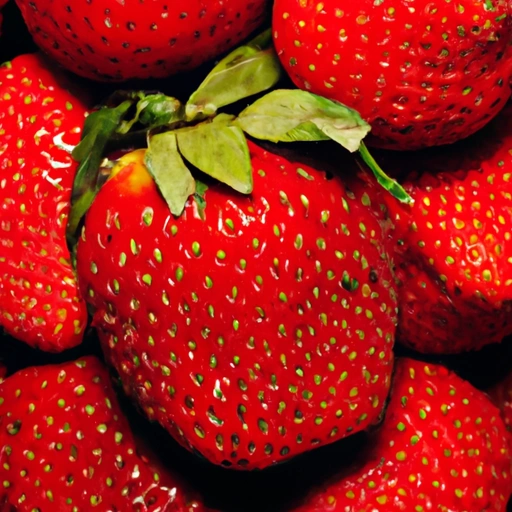Strawberry
Description

The strawberry, belonging to the genus Fragaria, is a widely cherished fruit known for its bright red color, juicy texture, and sweet yet slightly tart flavor. Strawberries are not true berries from a botanical standpoint but are rather an aggregate accessory fruit, meaning the fleshy part is derived from the receptacle that holds the ovaries. Each 'seed' (achene) on the outside of the fruit is actually one of the ovaries of the flower, with a seed inside it. In terms of measurements, strawberries are usually quantified in cups (American), grams (European), or ounces (American).
Common uses
Strawberries are commonly used in a variety of culinary applications, including fresh consumption, jams, jellies, desserts, salads, and as garnishes. They add a burst of color, flavor, and nutritional benefits to a range of dishes.
Nutritional value
Calories
A standard serving of strawberries (about 100 grams or 3.5 ounces) contains approximately 32 calories.
Protein
Strawberries provide about 0.7 grams of protein per 100 grams.
Fat
This fruit is low in fat, with roughly 0.3 grams per 100 grams.
Carbohydrates
Strawberries contain about 7.7 grams of carbohydrates per 100 grams, which includes natural sugars and dietary fiber.
Vitamins
Strawberries are an excellent source of vitamin C and also contain vitamins A, E, and some B vitamins.
Minerals
The fruit provides minerals like potassium, manganese, and small amounts of iron and calcium.
Health benefits
Strawberries are rich in antioxidants and polyphenols, which can help fight oxidative stress. Their high vitamin C content supports the immune system, while the fiber aids in digestion and helps maintain healthy blood sugar levels. Regular consumption of strawberries has been associated with a reduced risk of chronic diseases such as heart disease and cancer.
Potential risks
Strawberries are among the fruits that may contain high levels of pesticides if not grown organically. They can also cause allergic reactions in some individuals, particularly those allergic to birch pollen. Due to their high fructose content, individuals with fructose intolerance should consume them in moderation.
Common recipes
Strawberries are featured in recipes like strawberry shortcake, fruit salads, smoothies, and pies. They can also be used to make syrups, compotes, and ice creams.
Cooking methods
Strawberries are often enjoyed raw to preserve their delicate flavor and nutrient content but can be roasted, baked, or macerated as well.
Pairing with other ingredients
They pair well with other fruits, cream, yogurt, balsamic vinegar, mint, and ingredients like chocolate and nuts.
Summary
Strawberries are a beloved fruit that offer a delightful balance of sweetness and acidity, making them a versatile ingredient in both sweet and savory dishes. With a rich history and numerous health benefits, they are a nutritious addition to any diet. Whether eaten fresh, cooked, or as part of a dish, strawberries continue to captivate taste buds around the world.